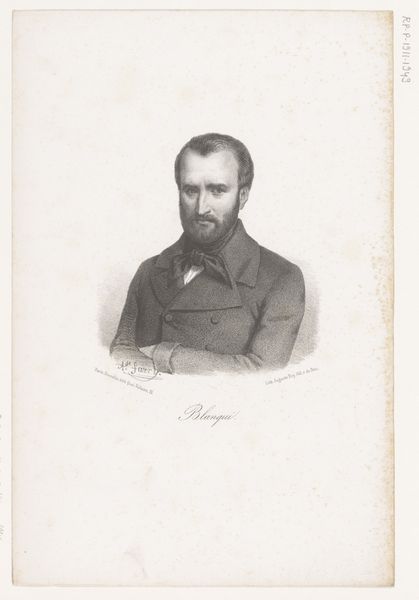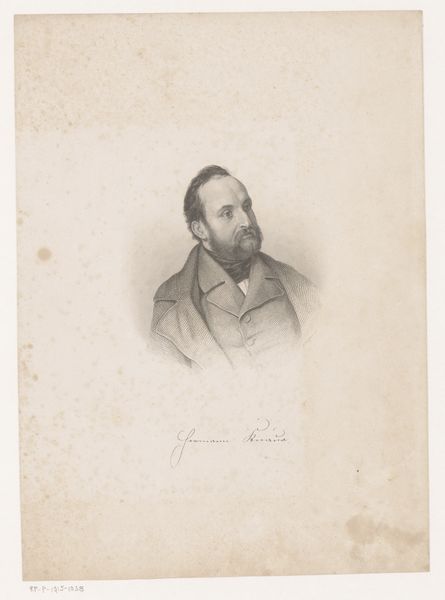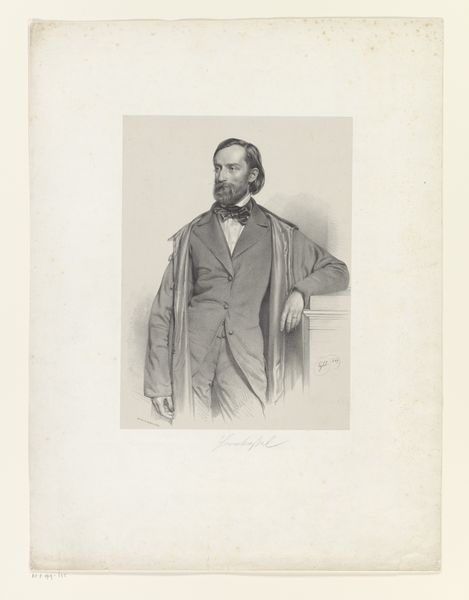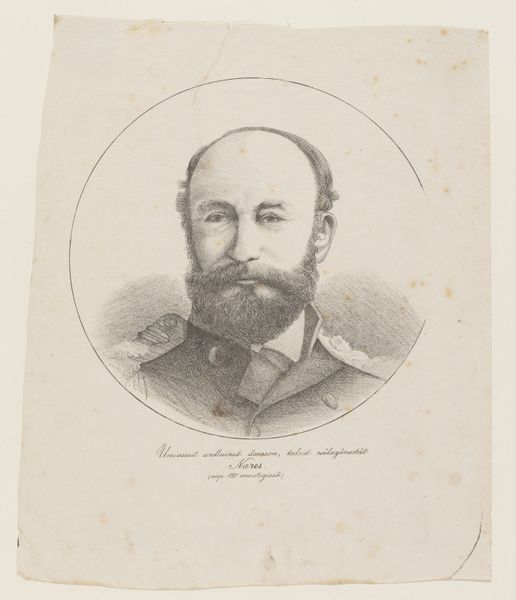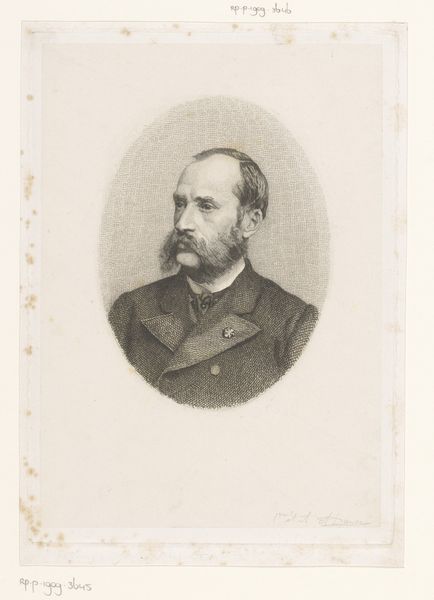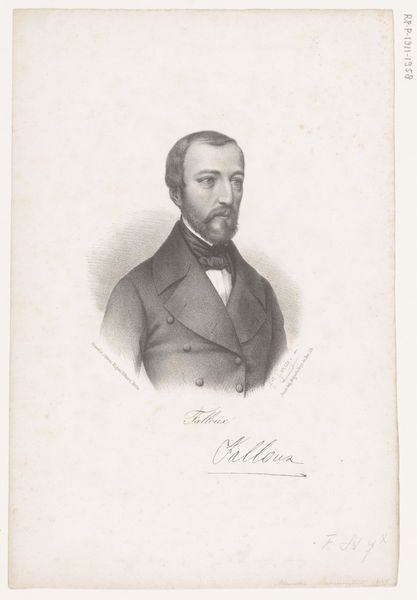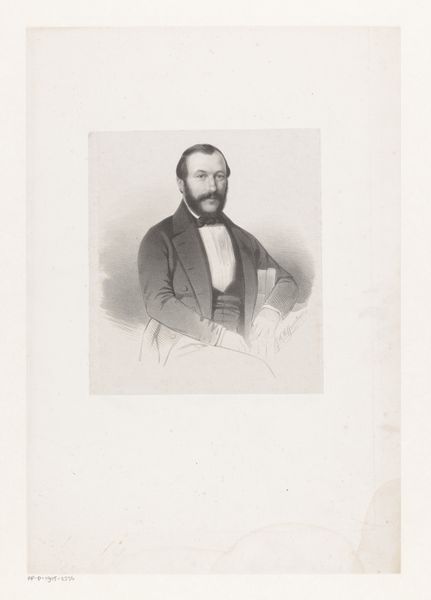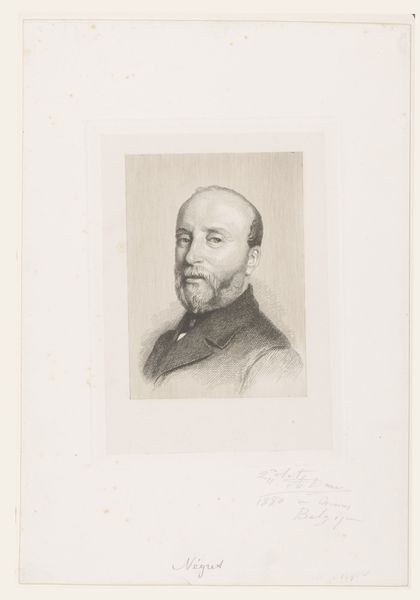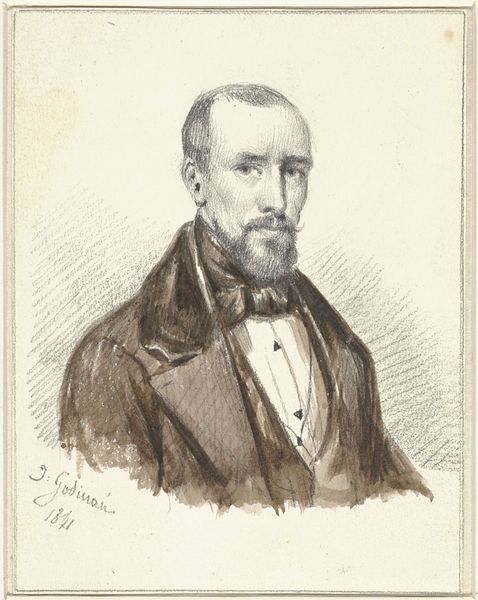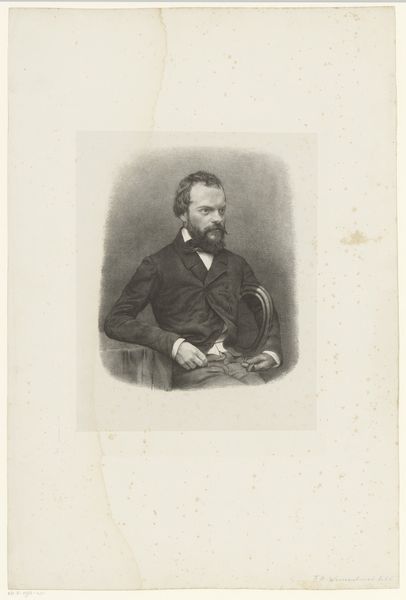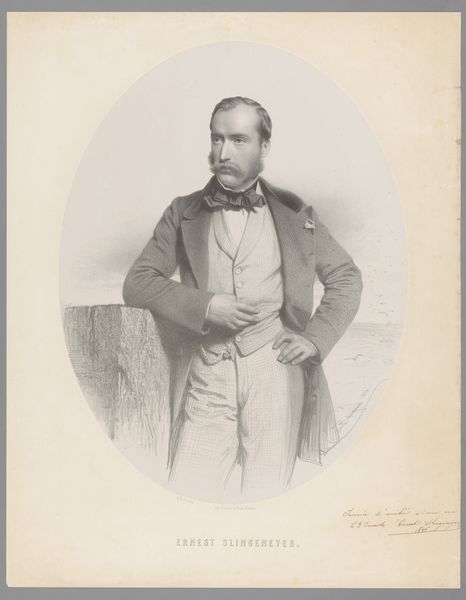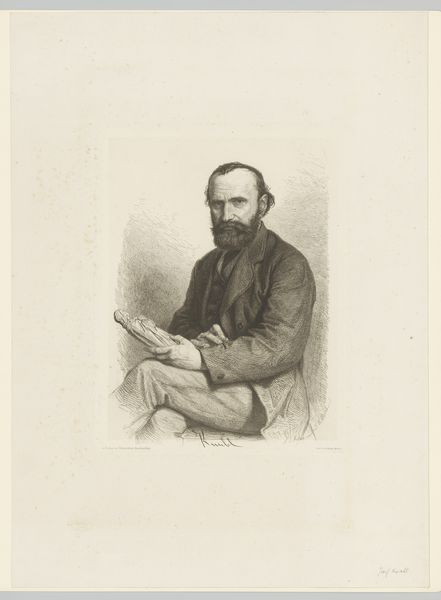
drawing, pencil
#
portrait
#
pencil drawn
#
drawing
#
16_19th-century
#
pencil sketch
#
old engraving style
#
portrait reference
#
pencil drawing
#
pencil
#
portrait drawing
#
realism
Dimensions: height 275 mm, width 183 mm
Copyright: Rijks Museum: Open Domain
This is a portrait of Armand Barbès, made by Alphonse Farcy. It's a lithograph, a printmaking technique that relies on the chemical repulsion between oil and water. The image begins with a drawing made with a greasy crayon on a flat stone or metal plate. This drawing is then chemically processed, so that the image attracts ink and the blank areas repel it. The print is created by pressing paper against the inked surface. Lithography democratized image-making in the 19th century. Cheaper and faster than engraving, it allowed for mass production of portraits like this one. The resulting prints circulated widely, shaping public perception of figures like Barbès, a French revolutionary. The process blurred the lines between art and industry, highlighting the complex relationship between artistic expression and the burgeoning world of mass media. By understanding the printing process, we can appreciate how this image functioned within the social and political landscape of its time.
Comments
No comments
Be the first to comment and join the conversation on the ultimate creative platform.
